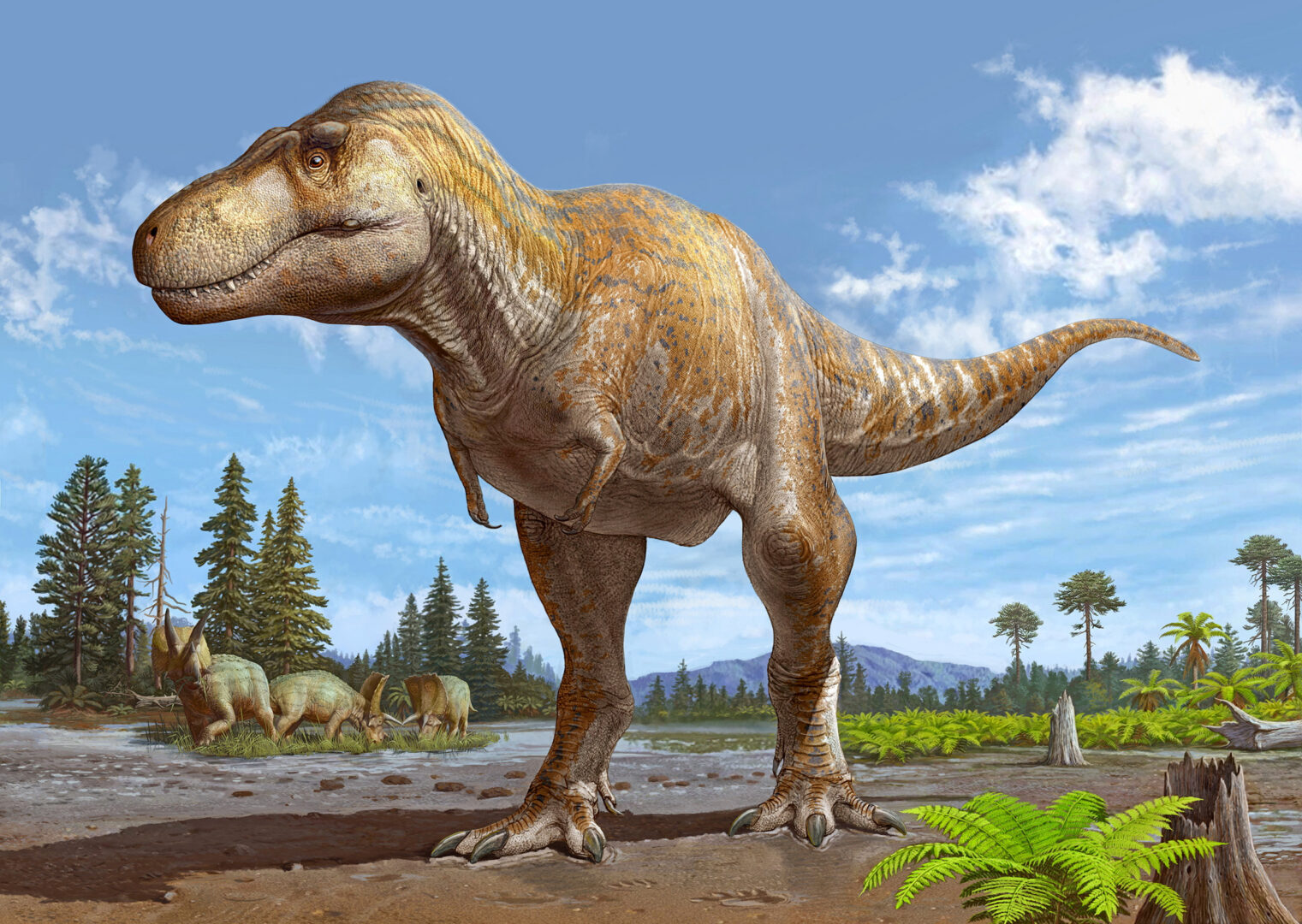
An artist's reconstruction of the newly identified dinosaur species Tyrannosaurus mcraeensis, based on a partial skull fossil collected in New Mexico, U.S. Sergei Krasinski/Handout via REUTERS

An artist's reconstruction of the newly identified dinosaur species Tyrannosaurus mcraeensis, based on a partial skull fossil collected in New Mexico, U.S. Sergei Krasinski/Handout via REUTERS

An artist's reconstruction of the newly identified dinosaur species Tyrannosaurus mcraeensis, based on a partial skull fossil collected in New Mexico, U.S. Sergei Krasinski/Handout via REUTERS
Aired; February 13th, 2024.
Last month – some 70 million years after it lived – a new species of predatory dinosaur was identified.
The newly named species — Tyrannosaurus macraeensis — was closely related to the iconic Tyrannosaurus rex. Researchers believe it may be T.rex‘s closest relative, even though it may have lived seven million years before T.rex.
Harrisburg University of Science and Technology professor Dr. Steven Jasinski was a part of a team of researchers that made the discovery, which came 40 years after the dinosaur’s fossils were found in New Mexico. But just within the past 11 years, Jasinski and other researchers began studying the fossils of what was believed to be a Tyrannosaurus rex.
On The Spark Tuesday, Jasinski spoke about how the researchers determined they had found a different species,”We have parts of the skull and we have some of the parts of the spine. The backbone, some of the vertebrae, or at least piece of the vertebrae. And previously, especially with the lower jaw that we had recovered, it looked similar to T.rex, most super large predatory dinosaurs that we find that are around this age and in this general region of the world, are all considered to be T.rex, because T.rex seems to be pretty expansive and all over the place. But smaller features of the jaw or pieces of the skull, especially around the eyes themselves, tell us once we looked more in depth, that this is distinct from T.rex. It’s something new and different.”
Tyrannosaurus macraeensis may have been 35 feet long with different eyes and teeth than the T.rex.
The discovery of Tyrannosaurus macraeensis has scientists rethinking how and where Tyrannosaurus rex evolved, according to Jasinski,”The thought was that we have really, really old members of the group from North America. They travel to Asia, and then they eventually traveled back to North America. And T.rex basically then came from Asia. And so that’s what we always have assumed. But now finding older specimens that are more closely related in the southern part of the United States and southern North America, it looks like what we may have is that T.rex actually evolved in southern North America instead. And then some offshoots went to Asia, some just moved north into the north of the United States and Canada. And so it’s painting us a different picture of where these animals are coming from and how they’re evolving and how they’re changing over time.”
The fossils of the T.macraeensis were found in 1983 and have been on display in a New Mexico museum. With the new discovery, museums throughout the world may be studying the fossils of what they thought were T.rex remains to determine what they actually have are bones from a Tyrannosaurus macraeensis.
The days of journalism’s one-way street of simply producing stories for the public have long been over. Now, it’s time to find better ways to interact with you and ensure we meet your high standards of what a credible media organization should be.